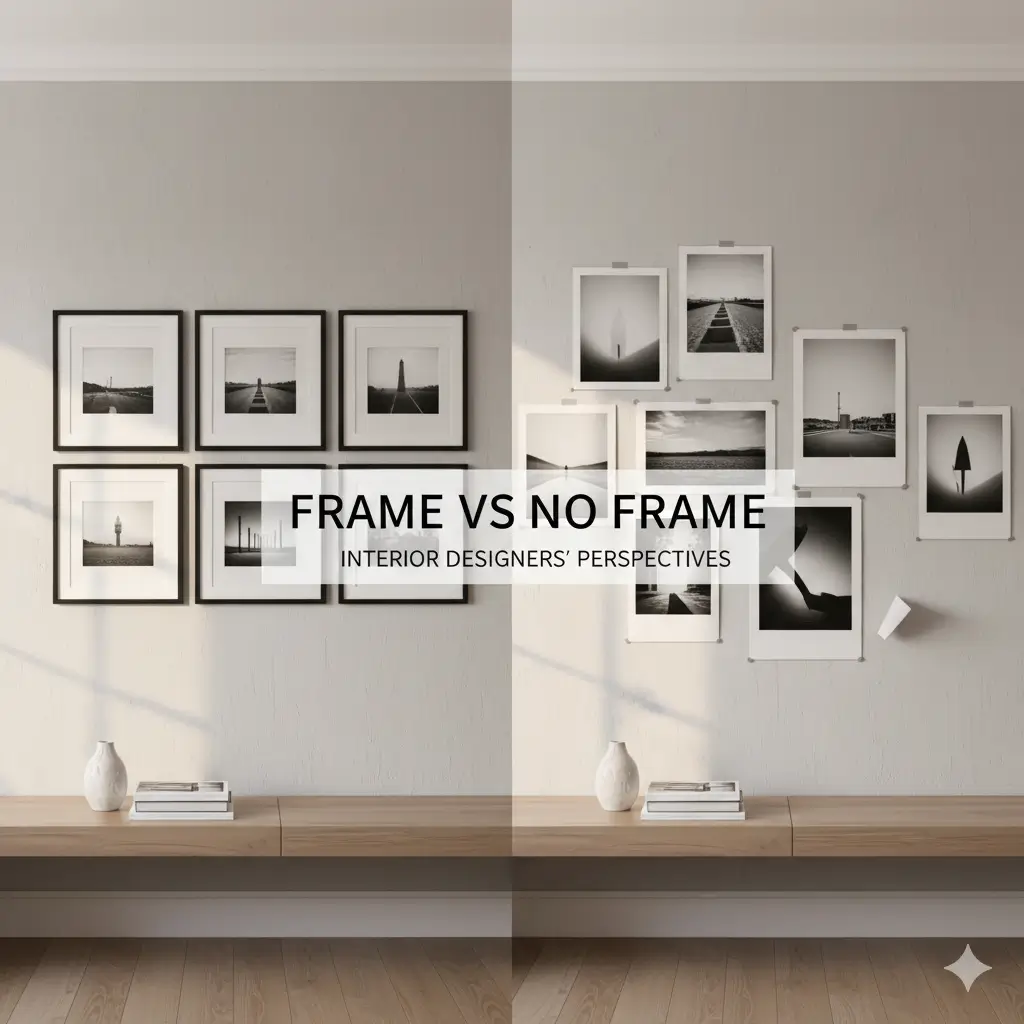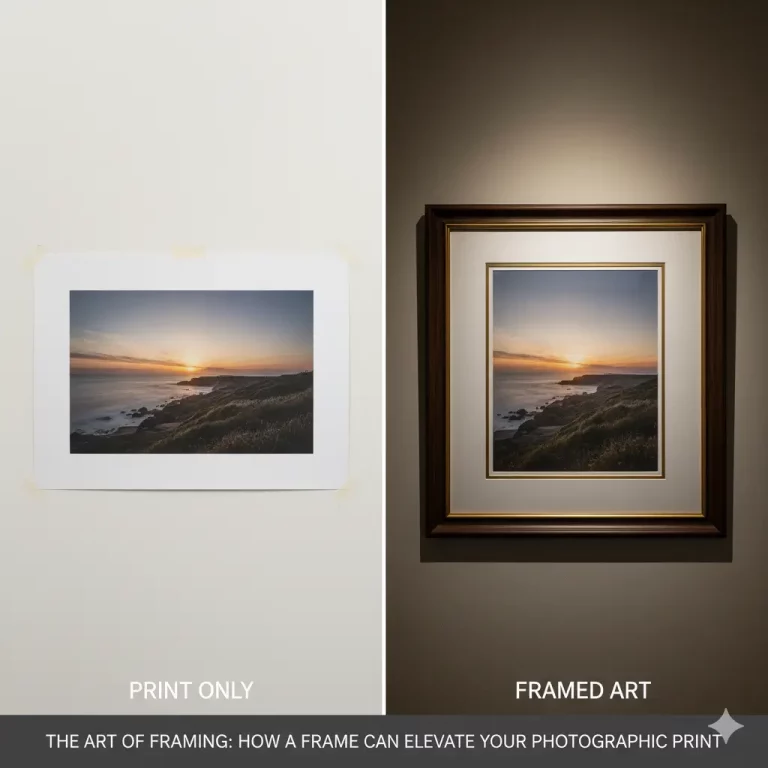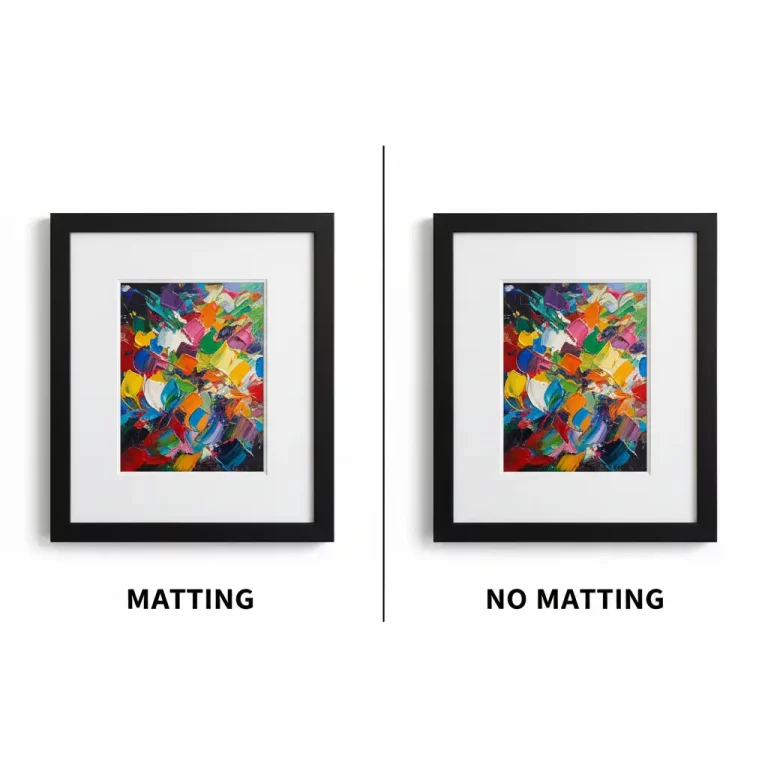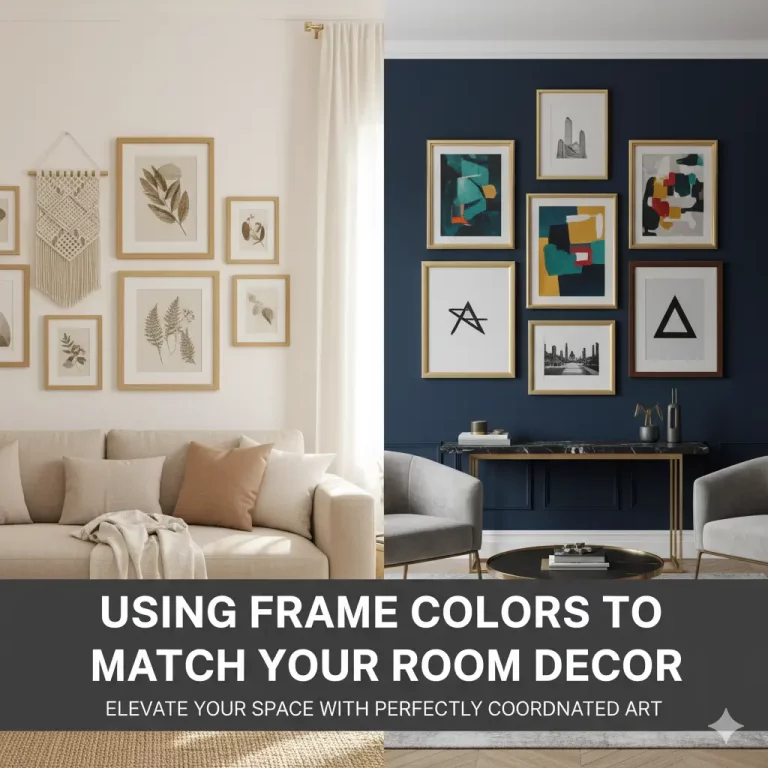Deciding how to display photos and art is a crucial step in personalizing your home. A common dilemma many people face is whether to frame their pieces or opt for a modern, frameless look. The choice between framed vs unframed photos can dramatically alter the mood and style of a room. Is a classic, elegant frame the right call, or does a sleek, borderless print better suit your space?
This decision isn’t just about personal preference; it’s a strategic design choice that can enhance your home’s aesthetic. We’ve gathered perspectives from interior designers to break down this debate. By exploring the pros and cons of each approach, you can learn how to make the right choice for your artwork, your style, and your home.
The Case for Framed Photos: A Timeless Tradition
Frames have been the standard for displaying art for centuries, and for good reason. They offer protection, add a finishing touch, and can tie a piece of art into the broader decor of a room.
The Protective Power of a Frame
From a practical standpoint, framing is the best way to protect your photos and prints. A quality frame with glass or acrylic glazing shields your art from dust, moisture, and physical damage. UV-protective glazing can also prevent colors from fading over time due to sun exposure. This is especially important for valuable artwork, limited edition prints, or irreplaceable family photos.
A Polished and Finished Look
Interior designers often use frames to give artwork a sense of importance and a polished look. A frame creates a clear visual boundary, drawing the eye toward the image and separating it from the wall. This intentional separation can make a piece feel more significant and complete. A well-chosen frame acts as a final layer of detail, much like a carefully selected piece of jewelry completes an outfit. For those looking to master this art, our design guide for beautiful frames offers excellent tips.
Tying Your Decor Together
Frames are a powerful tool for creating a cohesive look in your home. You can choose a frame style—whether modern, rustic, ornate, or minimalist—that complements your existing furniture and decor. Using similar frames for a collection of different images can create a unified gallery wall, even if the art itself is varied. This helps bring harmony to a space. When considering the difference between displaying paintings and prints, our guide on framing paintings vs. framing photo prints can be very helpful.
When to Choose a Frame:
- Traditional or Classic Decor: Ornate or classic wood frames fit seamlessly into traditional, farmhouse, or rustic interiors.
- Creating a Gallery Wall: Using consistent frames helps unify a diverse collection of art.
- Protecting Valuable Pieces: For original art, limited prints, or sentimental photos, a frame is non-negotiable.
- Adding a Formal Touch: Frames can elevate the look of a room, making it feel more formal and put-together.
The Allure of Unframed Photos: Modern and Minimalist
In recent years, unframed displays have surged in popularity, offering a clean, contemporary, and often more immersive viewing experience. This approach is all about letting the artwork speak for itself.
A Clean and Unobstructed View
The primary appeal of going frameless is the unobstructed view it offers. Without a border, the image extends to the very edge, creating a direct and immersive experience for the viewer. This minimalist approach is perfect for modern, contemporary, and industrial-style homes where clean lines are celebrated. The debate between framed vs unframed photos often comes down to whether you want the display method or the art itself to be the focus.
Popular Unframed Options
Going frameless doesn’t just mean tacking a poster to the wall. Modern printing technology has given us sophisticated options that look polished and intentional.
- Canvas Prints: Photos printed directly onto canvas and stretched over a wooden skeleton are a popular choice. The texture of the canvas adds an artistic, painterly quality to the image. These can stand alone or be placed in a floating frame for a subtle edge.
- Acrylic Prints: For a high-impact, glossy finish, acrylic prints are an excellent option. The photo is printed on paper and then face-mounted to a sheet of acrylic. This process enhances color, contrast, and clarity, creating a vibrant, almost three-dimensional effect.
- Metal Prints: Images are infused directly onto a sheet of aluminum, resulting in a durable and brilliantly luminous piece of art. Metal prints are scratch-resistant, waterproof, and work well in high-traffic areas or even bathrooms.
- Wall Adhesive Prints: These are high-quality decals that can be applied directly to a wall and removed without damage. They offer flexibility and are great for renters or temporary displays.
For a deeper dive, our comparison of hanging photo frames vs. wall adhesive prints can help you decide.
Creating a Sense of Space
Because they sit flush against the wall and lack a bulky border, unframed pieces can make a room feel more open and spacious. This makes them a great choice for smaller rooms or for creating large-scale art installations that don’t overwhelm the space. A large, unframed landscape photo can feel like a window to another world.
When to Choose an Unframed Display:
- Modern and Minimalist Homes: The clean lines of unframed art are a perfect match for contemporary decor.
- Large-Scale Statement Pieces: A massive, unframed canvas or acrylic print can serve as a stunning focal point.
- When the Art is the Star: For bold, vibrant photography, going frameless ensures nothing distracts from the image.
- High-Humidity Areas: Materials like metal or acrylic are more resistant to moisture than traditional wood frames, making them suitable for kitchens and bathrooms.
The Hybrid Approach: Combining Framed and Unframed Displays
You don’t have to choose just one style. Many interior designers advocate for mixing framed vs unframed photos to create a dynamic and visually interesting space. A well-curated gallery wall might feature a mix of traditional frames, modern floating frames, and a central, large-format canvas print. This eclectic approach adds layers of texture and personality, telling a richer story about the homeowner.
For example, you could anchor a gallery wall with a large, unframed canvas print and surround it with smaller, framed photos and mementos. This creates a clear focal point while allowing for variety and personal expression. Our guide on how to arrange a wall painting set for maximum impact can inspire these kinds of layouts.
How to Make Your Choice
So, how do you decide? Here’s a quick checklist to guide you in the framed vs unframed photos debate:
- Assess Your Decor Style: Is your home traditional, modern, rustic, or eclectic? Choose a display method that complements your existing aesthetic.
- Consider the Artwork: Is it a priceless heirloom or a fun, replaceable print? A high-value piece needs the protection of a frame. A bold, modern photograph might shine in an acrylic mount.
- Think About the Room: In a formal living room, frames might be more appropriate. In a casual family room or a sleek, modern office, an unframed canvas could be perfect.
- Define Your Goal: Do you want a unified, harmonious look, or a dynamic, eclectic vibe? Do you want the art to blend in or stand out as a bold statement?
Ultimately, the best choice is the one that you love and that enhances both the artwork and your living space. Whether you opt for the timeless elegance of a frame or the clean simplicity of a frameless display, showcasing your photos is about turning your house into a home filled with personal stories and beautiful moments.





